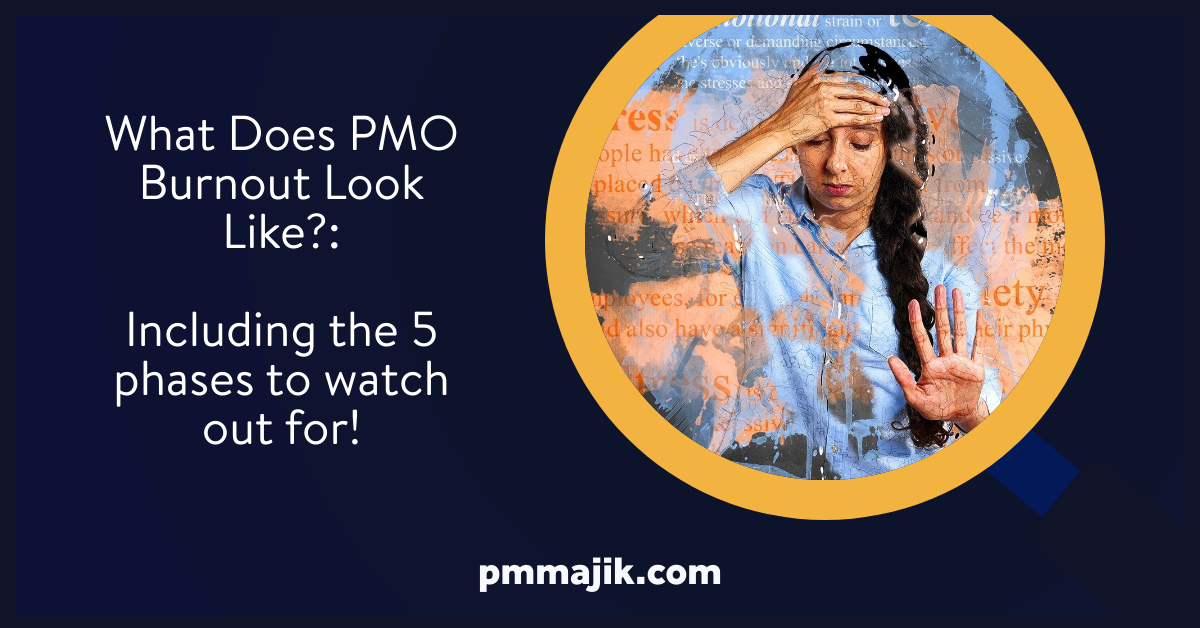Burnout can happen to the best, most resilient project management office (PMO) workers. It’s not a sign of weakness but more likely issues within how the office works, but exactly what does PMO burnout look like?
On an individual level, burning out isn’t something to be ashamed of. On an institutional level, it’s a sign that an organisation is functioning optimally – burnt out workers means something needs to change.
How can you know what burnout looks like for you and what it looks like in your PMO? Here, we’re going to look at:
- How burning out feels personally
- What burnout looks like to other people
- Identifying an organisation with burnt out staff
So you can work on your own and your PMO’s health.
What does burnout feel like for a person?
A person will start to feel burnt out when they experience too much ongoing stress. This is generally caused by an overburdened workload or other work-related issues.
With the forced changes to working practices and having to cope with new management styles, the pandemic has increased the chances that you can reach burnout. Lots of organisational change without planning and training has changed how people interact with their work.
Here are some of the signs that you’re experiencing burnout:
- Cynicism – rather than being enthusiastic about change and new processes, you respond negatively.
- Exhaustion – you’re tired no matter how much sleep you get and might not be able to sleep at all.
- Feeling useless – you don’t feel like you’re contributing to your PMO and may feel imposter syndrome.
- Depression – usually an accumulation of the previous three, a feeling of depression and negativity won’t go away.
- Hate for your work – even if you were the most active and engaged worker, now you actively dislike your job.
- Inattention and being easily annoyed – you don’t engage with your work and when you do it gets under your skin.
- Headaches and digestive issues – a common symptom of stress, regular headaches, stomach pains, and gut issues become common.
- Self medicating – alcohol or other substances can be used to mask the feelings, having far more than is normal for you.
What does burn out look like as a manager or leader?
The University of Winona tracked out a timeline of how a person becomes burnt out. As a people manager or leader, it’s important to spot the descent into burnout before it becomes an issue for anyone on your team.
The five stages of burnout
- Stage one: Honeymoon where a person is driven and enthusiastic about their work. With strong coping mechanisms, this stage can last a very long time.
- Stage two: Balancing act is when job dissatisfaction starts, they become less efficient, more tired, and look for escapist pursuits.
- Stage three: Chronic symptoms set in when the person is long-term stressed and tired and angry all the time.
- Stage four: Crisis happens when self-doubt dominates, work frustrations take over their life, and physical signs of stress worsen.
- Stage five: Enmeshment is when burnout becomes so much part of a person that it’s a part of their character.
How can I tell my PMO team is experiencing burnout?
Along with spotting and working to mitigate individual burnout within the people you work with, you need to be aware of burnout across your PMO team. There are key indicators that will tell you when burnout is becoming an issue across your office.
Some things to pay attention to include:
- KPIs not being hit due to a disengaged and less productive team
- An increase in workplace conflict when multiple people are too stressed
- More sick days being used as people feel mentally and physically unwell
- A general resistance to change in a team that was once positive
Whether your office has changed over a short period of time or you’ve moved to work in a new PMO that has these features, something will need to change.
What does PMO burnout look like?
Having one or multiple people working in your PMO who are burnt out is bad for them personally and for the optimum function of your office. Understanding PMO burn out means you can help your workers and bring productivity back up to par. Knowing what PMO burnout looks like is the first step in being able to combat it.



